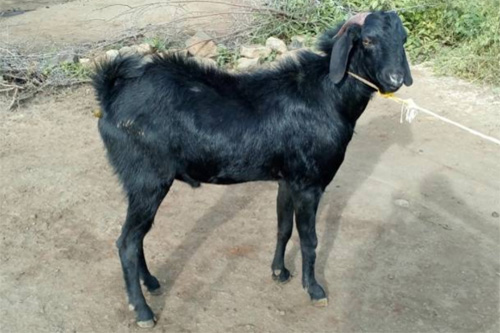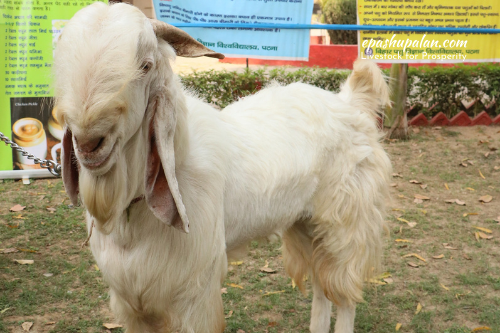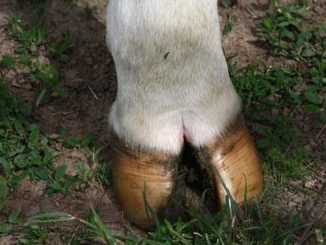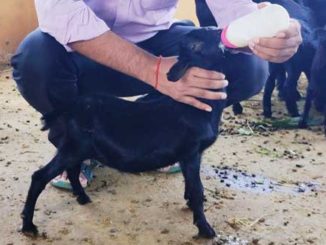Milk has always been heralded as “a complete food”. It contains all the important nutrients required by human body and its consumption keeps on increasing every year. According to statistical reports around 81 million metric tons of milk was consumed in India itself in 2020. Whenever we talk about milk, it is generally synonymous with cow’s milk or buffalo’s milk. However, not every farmer can rear a cow or buffalo for milk production. The space required, labour involved, feed cost etc resolute to big numbers in terms of economy which makes it difficult for small farmers to rear a cow/buffalo. In such circumstances, goat and its milk presents itself as a very economical and feasible substitute.
Goats are one of the earliest domesticated animals in livestock farming. Goats provide not only meat but also milk and wool and comparing to cattle and buffaloes, goats can be reared with a very low investment.

Goat Rearing and its benefits
Goats require minimum investment as neither they need any special type of ration as they can fulfil their requirement by grazing pastures nor they need any special housing or large space (due to their small body size) thus proving a boon for poor marginal farmers. Goats are very docile in nature, handling them is also not very difficult. Also, goats are prolific breeders, they attain sexual maturity at about the age of 10-12 months and gestation period is also short (about 150 days). They are polytocus animals i.e., give birth to more than one kid (young one of goat), as a matter of fact giving birth to twin kids is very common in Goats. Goats are very hardy in nature, they can easily live in draught prone areas and can thrive well on thorny bushes, weeds, crop residues, agricultural by-products. Goat’s meat is very popular among festival feasts. Besides the high nutritive value, goat’s meat is also very low in cholesterol so relatively better for people with high cholesterol.
One of the economic values of goat farming is that there is no religious taboo against goat slaughter and meat consumption, slaughter and dressing operation and meat selling can be carried out without much environment restriction.

Goat Milk and its speciality
Although goat’s milk is not used conventionally but in some parts of our country especially in hilly areas, it is very much prevalent. Some breeds of goat such as Jamnapari give as much as 2.5 kgs of milk per day. The fat globules in goat’s milk are small in size as compared to other dairy animals, thus, are easily digestible. Goat’s milk has antifungal and antibacterial properties and also non allergic as to that of cow’s milk. Goats are also termed as ‘Walking refrigerator’ for the storage of milk and can be milked more than twice a day. Goat’s milk is rich in taurine which is essential for infant growth and development. Goat’s milk has also been used in beauty enhancing as it’s milk reduces skin ageing symptoms.
Few Indian Breeds of Goat
Jamnapari
It is mainly found in Uttar Pradesh.They are large-sized goats, tall and large having folded pendulous ears. An adult male goat weighs 65 kgs to 80 kgs and female weighs between 45 kgs to 60 kgs. They have the ability to yield 2 to 2.5 kilograms of milk / day.

Barbari
They are found in states like Delhi, Uttar Pradesh and Haryana. Barbari goat breeds are grown primarily for milk & meat purpose. An adult male goat ranges between 35-45kgs and female goat weighs 25- 35 kgs. Barbari breed has the ability to give 1 – 1.5kgs of milk / day. Barbari are prolific breeder. They can give 2 – 3 kids in parturition and generally gives birth twice within an interval of 12 to 15 months.
Beetal
They are found mainly in Northern state of Punjab. Beetal goat breeds are grown mainly for milk and meat. They are generally smaller than the Jamunapari breed. An adult male ranges between 50-70kgs and adult female goat ranges between 40-50kgsThey have the ability to give, 1 to 2kgs of milk / day.
Osmanabadi
This goat breed is found in Latur, Osmanabad, Ahmednagar, Parbhani & Solanpur district of Maharashtra. It has very good quality of meat. Good yielders produce up to 3.5 kilograms a day. Average milk yield 170 to 180 kg/lactation.
Black Bengal
It is the most productive among other Indian goat breeds. The average weight of buck is 15 kg and doe is 12 kg. Multiple births are very common for them – like 2, 3 or 4 kids born at a time. Average lactation yield of Black Bengal is 53 kg and lactation length 90 – 120 days. The skin of Black Bengal is very much in demand for high class shoe-making.

Sirohi
They can be found in the states of Rajasthan and Uttar Pradesh. Average body weight of buck is 50 kg and of doe is 23 kg. This is a dual purpose breed of goat, which is reared for both milk and meat. This breed is very famous for weight gain and better lactation even under poor rearing condition.
Aids by government for Goat rearing
To help poor landless farmers to start goat farming, government has introduced many schemes and also started many technical training programmes. It is a great challenge for us to fulfil the growing demand through livestock farming. Among livestock, goat farming is found to be economic and feasible due to many factors like minimum requirement for housing, easy to handle etc. To encourage goat farming, Government in association with NABARD (National Bank for Agriculture and Rural Development) and other regional banks providing loans along with many subsidy policies.
Before starting a goat farm, the interested farmer can take the technical suggestion or council from nearby goat breeding centre or from animal husbandry extension officer. The farmer can also take some training programme for goat farming and visit a well organised government goat farm. Apart from farmers, government has also started schemes for youth interested in livestock farming to become entrepreneurs. They can start goat farming after proper training and with financial aids from government. To know more about these schemes, one can visit the official website of Ministry of Agriculture and Rural Development or can call on Kisan helpline number
Conclusion
India is one of the largest producers of goat milk and goat meat in the world. The very important characteristics of goat include efficient survival in adverse harsh environment and poor quality land where very few crops can be grown. They can efficiently survive with available poor quality shrubs and trees. In many parts of our country, goat has a religious and ritualistic importance and also in ceremonial feastings and for payment of social dues.
Thus, Goat farming can be a wonderful opportunity for not just poor economically backward farmers but also for youth with entrepreneurial aspirations. I know it will be an exaggeration to say that goats are replacement of cow/buffalo but we cannot deny the fact that they are an excellent alternative for poor farmers to rear. Thus, we can say that goats are indeed poor man’s cow.






Be the first to comment